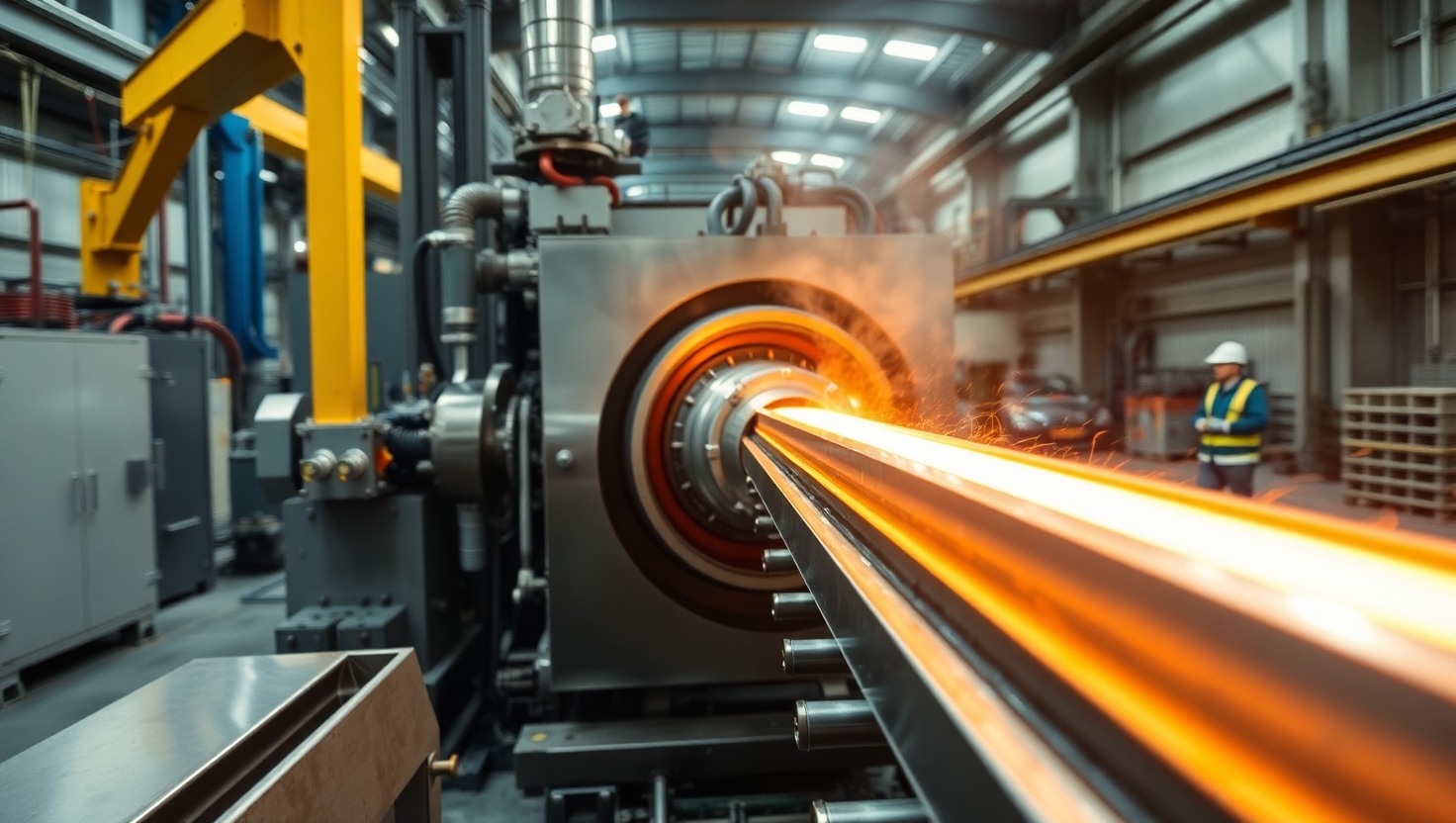Aluminium Extrusion Process Explained with Examples
Published by: ALUTimes | Date: July 10, 2025
What is Aluminium Extrusion?
Aluminium extrusion is a manufacturing process that involves shaping aluminium alloy material by forcing it through a die with a specific cross-sectional profile. This method creates strong, lightweight components used across industries like construction, transportation, aerospace, and consumer products.
The Aluminium Extrusion Process Step-by-Step
- Billet Preparation: Raw aluminium is heated to 400–500°C and cut into cylindrical billets.
- Extrusion: The billet is forced through a steel die using hydraulic pressure in either a direct or indirect press.
- Cooling: The extruded profile is rapidly cooled using air or water quenching systems.
- Stretching: The cooled profile is stretched to straighten and relieve internal stresses.
- Cutting: Profiles are cut to desired lengths, often between 4–8 meters.
- Ageing/Heat Treatment: The profiles are heat-treated to harden the alloy, enhancing mechanical properties.
Types of Aluminium Extrusion
- Solid Extrusions: No voids or openings (e.g., rods, beams).
- Hollow Extrusions: Contain one or more voids (e.g., pipes, tubes).
- Semi-Hollow Extrusions: Partially enclosed profiles used for specialized applications.
Direct vs. Indirect Extrusion
Direct Extrusion: The billet is pushed through a stationary die — widely used, but has higher friction and energy costs.
Indirect Extrusion: The die moves toward the billet — more efficient and produces better surface finish.
Applications of Aluminium Extrusions
- Construction: Window frames, curtain walls, railings.
- Automotive: Crash management systems, roof rails, structural parts.
- Electronics: Heat sinks and enclosures.
- Furniture: Frames, support structures.
- Renewables: Solar panel mounts and wind turbine components.
Benefits of Aluminium Extrusion
- Lightweight yet strong
- Corrosion-resistant
- Highly recyclable
- Cost-effective for custom shapes
- Excellent surface finish and anodizing potential
Examples of Aluminium Extrusion in Action
Example 1: Automotive Side Impact Beams
OEMs use extruded aluminium side beams to meet crash safety standards while reducing vehicle weight.
Example 2: Modular Building Systems
Aluminium profiles are used in prefabricated construction systems that reduce build times and material waste.
Example 3: Solar Mounting Systems
Renewable energy firms rely on precision aluminium extrusions for adjustable panel mounts.
Quality Control in Aluminium Extrusion
To ensure consistency, manufacturers use non-destructive testing, dimensional checks, and alloy composition verification. Advanced CNC cutting and real-time die monitoring are also used to minimize defects and maintain high standards.
Aluminium Alloys Used in Extrusion
- 6061: Versatile, good strength and corrosion resistance — ideal for structural parts.
- 6063: Superior surface finish — used in architecture and consumer products.
- 7075: High strength-to-weight ratio — often used in aerospace and defense.
Future Trends in Aluminium Extrusion
In 2025 and beyond, trends include AI-driven process optimization, green extrusion with low-carbon billets, and demand from EV, aerospace, and solar industries. 3D extrusion and custom profile development for automation will also shape the industry’s future.
Disclaimer
The information in this article is intended for educational purposes only. ALUTimes does not endorse any specific manufacturers or guarantee the accuracy of third-party claims or statistics.

